NYC’s Forgotten ‘War on Christmas Trees’
Discover how an obscure holiday crackdown affects festive street vendors today!


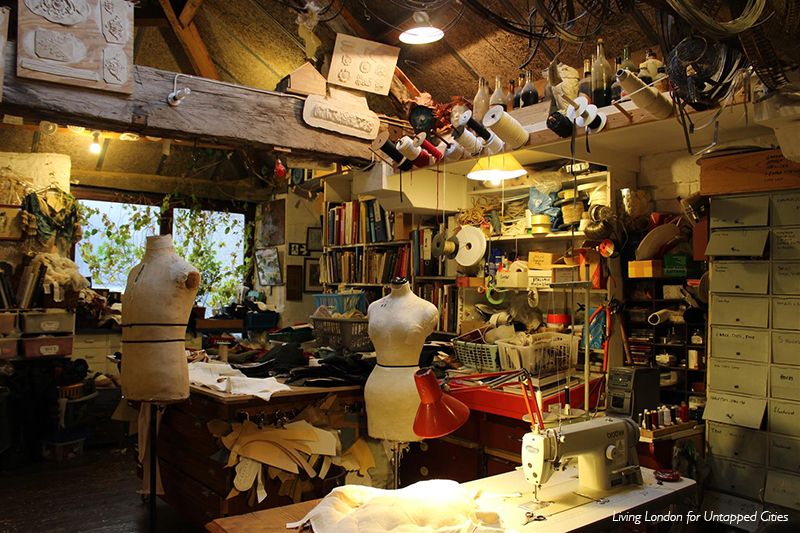
Just like New York City, London has myriads of untapped places and stories waiting to be discovered. Today, Living London, a website made up of “a collection of London places, photographs, stories, descriptions and poems,” has unearthed for us 10 of the quirkiest places in London. The project will soon expand its scope of work by leading walks and encouraging stewardship especially in disadvantaged communities.
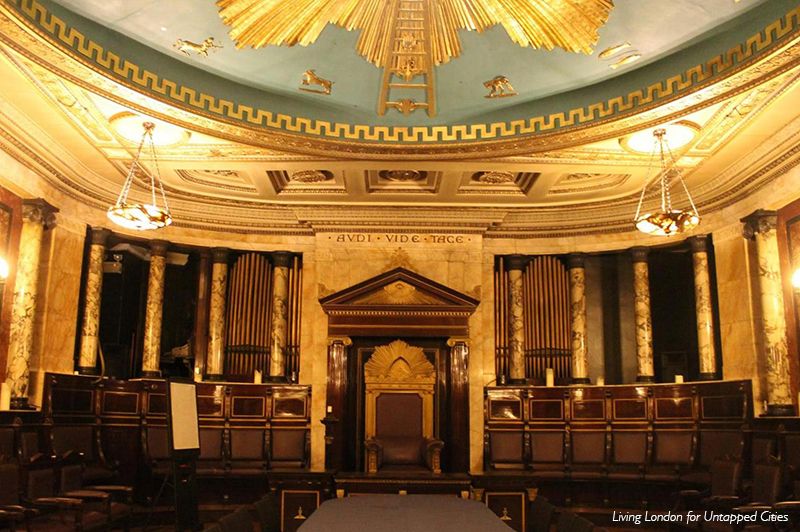
To enter the mysterious Freemason Temple, you have to go through Andaz – a luxury hotel adjacent to Liverpool Street station, and travel through a maze of immaculate and regal corridors, broken up by several heavy mahogany doors. The secret temple, built in 1912 and rediscovered in the early 1990s, was the place where Freemasons attended their lodge meetings. The temple is lavish and grand, with marble floors, majestic thrones and gold zodiac details. It’s been the backdrop of various fashion shoots and music videos.

Sands Films, an independent film production studio, is located in a former granary, a large grade II listed warehouse in Rotherhithe. The space contains a myriad of aesthetically pleasing spaces, from cluttered costume stores and sewing and dye workshops, to a small film stage. The building is also home to a cosy cinema and a picture library. Over the years Sands has delivered full production packages to companies in needs of a London studio base, from A Passage to India to Bright Star, and has produced costumes for productions like Pride and Prejudice and Phantom of the Opera. It contains a labyrinth of secret spaces.
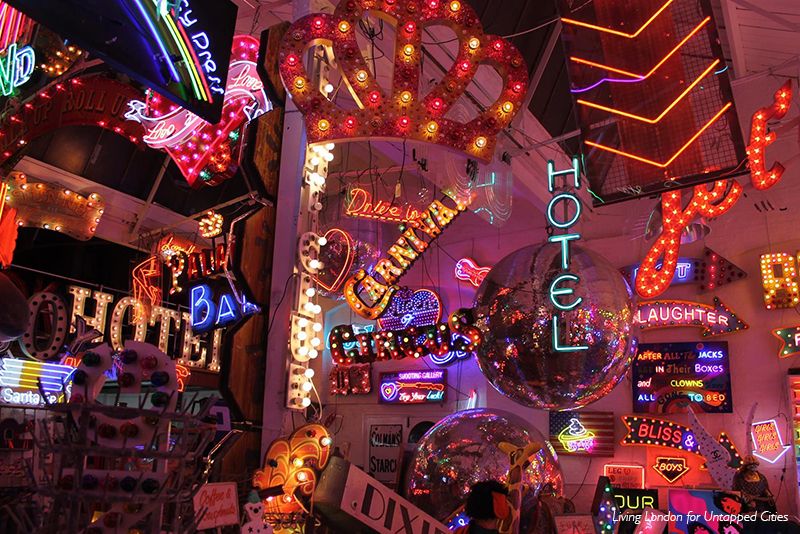
Gods Own Junkyard is home to the neon creations of ‘the master of glow’, the late Chris Bracey. Filled with hundreds of vintage and new neon signs, the space is a colourful and creativity utopia. Located in an unsuspecting space somewhere in the back ends of Walthamstow, the junkyard also boasts a small garden complete with mismatched furniture and greenery, as well as a bar/ café.
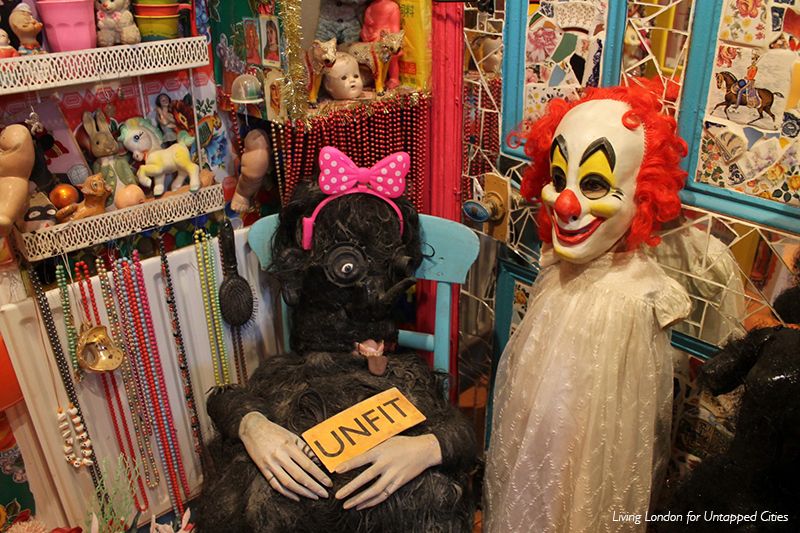
Stephen Wright’s House of Dreams is a technicolour wonderland located half way down a sleepy suburban street in Dulwich in South East London. Inside, the labyrinthine corridors and rooms are filled with a myriad of mosaics made up of all sorts of throwaway objects, from combs, and gems to an array of doll heads. On the walls of the house, there are all sorts of thoughtful, uplifting and melancholic things written. For example, “every day I ask myself what I am doing and why,” “I have no sense of belonging, where is my home,” “spiritually I turned my back on London years and years ago,” and “<dear world, I won’t be available for the rest of my life, I’m sorry for the inconvenience this might cause.” The house relays the personal life story of its maker, Stephen Wright, whilst sharing his hopes, fears, thoughts and experiences.
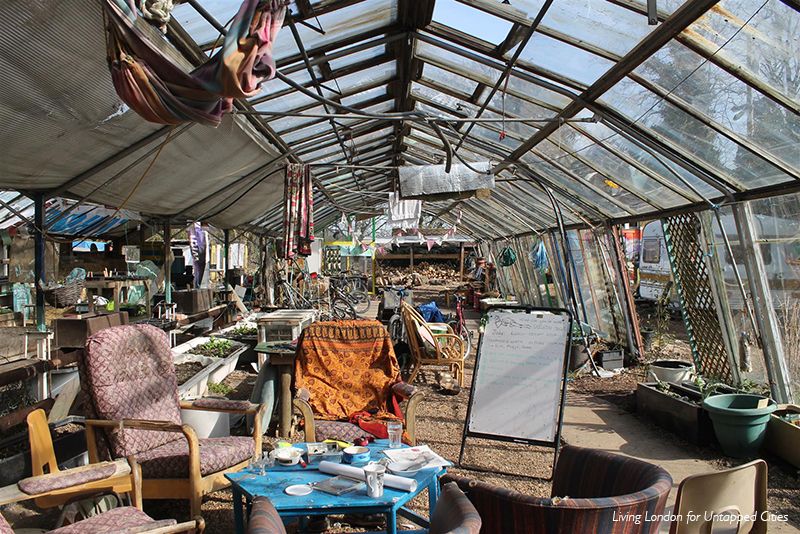
A pedal powered washing machine, a wind turbine, a make-shift loo and a mud hut are just a few of the oddities that make up Grow Heathrow, a green space occupied by squatters in protest of a third runaway at London’s Heathrow Airport. This sprawling, colourful and quirky community space is made up an array of makeshift dwellings that are host to a range of activities from food growing and environmental education classes to camp fires and music performances.
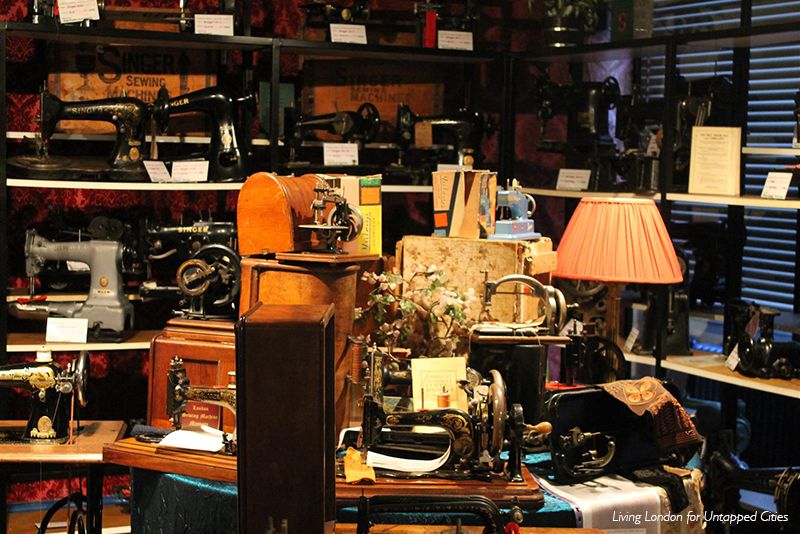
Located inside the Wimbledon Sewing Machine Company on Balham High Road, the London Sewing Machine Museum is a small and charming museum that charts the history of the sewing machine from 1850 to 1950. The Museum displays more than 600 machines from Mr Ray Rushton’s private collection, small and large, and of all shapes and sizes- the collection includes the very first Singer Museum and is popular with Japanese and American tourists, as well as Singer enthusiasts. Another featured item is a sewing machine Queen Victoria bought for her daughter in 1854 as a wedding present.
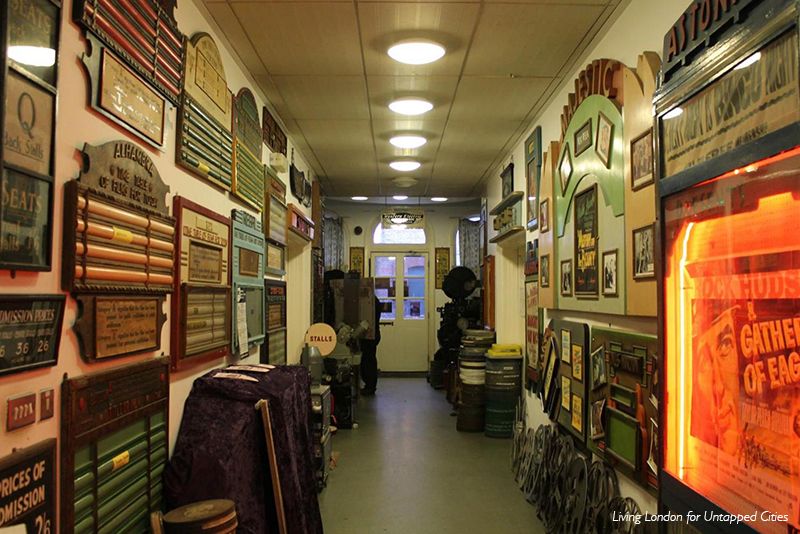
The Cinema Museum, located in Lambeth and housed in the workhouse where Charlie Chaplin toiled, is devoted to keeping alive the spirit of cinema. The historical space is filled with artefacts, memorabilia and equipment that preserve the history and grandeur of cinema from the 1890s. The walls are covered in stills, from old westerns, to classics such as Frankenstine. The Museum is also home to mechanical film projectors, art deco signs and periodicals. Upstairs there are bookshelves filled with all sorts of books for sale on the subject of films.
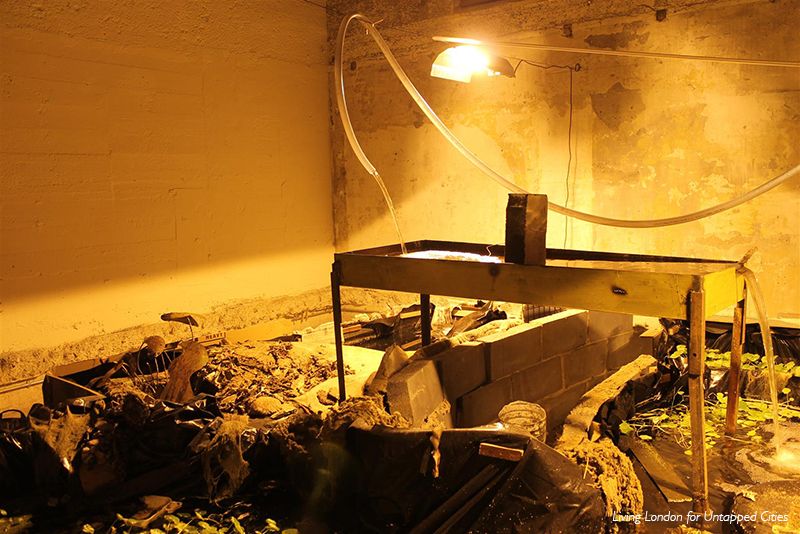
Dilston Grove is the former Clare College Mission Church on the Southwest corner of Southwark Park. A Grade II listed building of special architectural or historic interest, today it represents London’s only large-scale raw space available to artists. Exhibitions are often strange, otherworldly and immersive. One exhibition saw the open space transformed into a dark wasteland, a living and lived in scene, completed with makeshift sofas made of industrial sand bags, strewn rubbish, and dripping pipes.
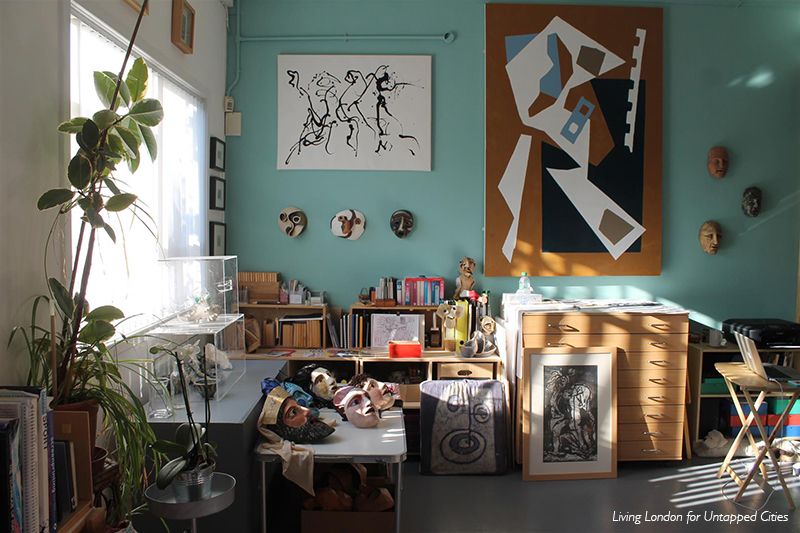
Make Space Studios are a collection of studios in the sky, they can be reached climbing a narrow steel staircase on a side road located not far from Lambeth North station. The rows of colourful cabins lie adjacent to railway lines and are home to a number of artists, sculptors, filmmakers, jewelers, designers and photographers. The studios often play host to arts and performance events and with unique interior and character, each studio is a world of its own.

Greenwich Peninsula Ecology Park is a small but precious green space located in North Greenwich which attracts a host of wildlife. The reserve reflects the nature of the original marshland on the peninsula, and contains bird hides where you can watch a variety of birds flit across the water. The pathways of the ecology park are lined with fences woven with spindly branches. It’s the perfect place to escape the noise and crowds of Urban London and to seek refuge in nature. There’s also a homely center with shelves filled with books on nature and wildlife, and seats to sit and relax.
Visit Living London to see its collection of more than 1000 places in London from specialist libraries and unusual art spaces to quirky nature reserves.
Subscribe to our newsletter